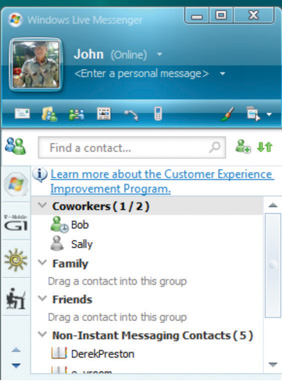6.1: Types of Communication
- Page ID
- 4913
Learning Objectives
- Identify characteristics and examples of synchronous communication.
- Identify characteristics and examples of asynchronous communication.
- Identify questions to answer when considering new communications technologies.
Completing a complex project successfully requires good communication among team members. If those team members work in the same building, they can arrange regular meetings, simply stop by each other’s office space to get a quick answer, or even discuss a project informally at other office functions. Many projects are performed by teams that interact primarily through electronic communication and are, therefore, called virtual teams (Business Dictionary, 2010). To avoid miscommunication that can harm trust and to include team members in a project culture, the project team needs a plan for communicating reliably and in a timely manner. This planning begins with understanding two major categories of communication.
Synchronous Communications
If all the parties to the communication are taking part in the exchange at the same time, the communication is synchronous. A telephone conference call is an example of synchronous communication. When the participants are not interacting at the same time, the communication is not synchronous, or asynchronous.
The following are examples of synchronous communications:
- Live meeting. Gathering of team members at the same location.
- Audio conference. A telephone call between two individuals or a conference call where several people participate.
- Computer-assisted conference. Audio conference with a connection between computers that can display a document or spreadsheet that can be edited by both parties.
- Video conference. Similar to an audio conference but with live images of the participants. Some laptop computers have built-in cameras to facilitate video conferencing, as shown in Figure 6.1 “Video Conferencing by Laptop”.
- IM (instant messaging). Exchange of text or voice messages using pop-up windows on the participants’ computer screens, as shown in Figure 6.2 “Instant Messaging Pop-Up Window”.
Figure 6.2 Instant Messaging Pop-Up Window

- Texting. Exchange of text messages that are 160 characters or fewer between mobile phones, pagers, or personal digital assistants (PDAs)—devices that hold a calendar, a contact list, a task list, and other support programs. See Figure 6.3 “Texting via Cell Phone”.
Time Zones
The worldwide communication network makes it possible to assemble project teams from anywhere in the world. Most people work during daylight hours, which can make synchronous meetings difficult if the participants are in different time zones, where they start, end, and take meal breaks at different times. It can be an advantage in some circumstances. For example, if something must be done by the start of business tomorrow, team members in Asia can work on the problem during their normal work hours while team members in North America get some sleep.
As the earth turns, the sun appears to move across the sky from east to west. Local noon occurs when the sun is at its highest position in the sky. Cities and countries to the north or south of each other all observe local noon at the same time. For example, noon in New York occurs at the same time as it does in Bogotá, Colombia, in South America. Be aware that many well-educated people in the United States think of South America as directly south of North America. As you can see in Figure 6.4 “World Time Zones”, most of South America is one or two time zones east of the United States.
To prevent confusion between a.m. and p.m., times are given using a twenty-four-hour clock. Noon is 12:00 and 1 p.m. is 13:00, and parts of an hour are divided by colons. For example, 13:25:21 is thirteen hours, twenty-five minutes, and twenty-one seconds.
Local Time
Local time is compared to the time zone that is centered at the historically significant naval observatory at Greenwich, England. The time at that location is Greenwich Mean Time (GMT). More recent references use UT for Universal Time (UT) instead of GMT.
Conference Call between New York and Paris
A project manager in New York is five time zones west of the reference zone, so the time is given as UT –5 (or GMT –5). If it is noon in the reference zone, it is 7 a.m. (five hours earlier) in New York. The manager would like to contact a project team member in Paris, France. Paris is one time zone west of the reference zone (UT +1 or GMT +1). If it is noon (12:00) in the reference zone, it is 13:00 (1 p.m.) in Paris.
This means that there is a six-hour difference between New York and Paris. If the project manager waits until after lunch to place the call (1 p.m. in New York), it might be too late in the day in Paris (7 p.m.) to reach someone.

